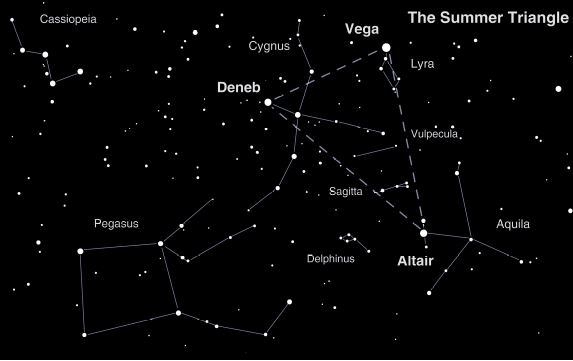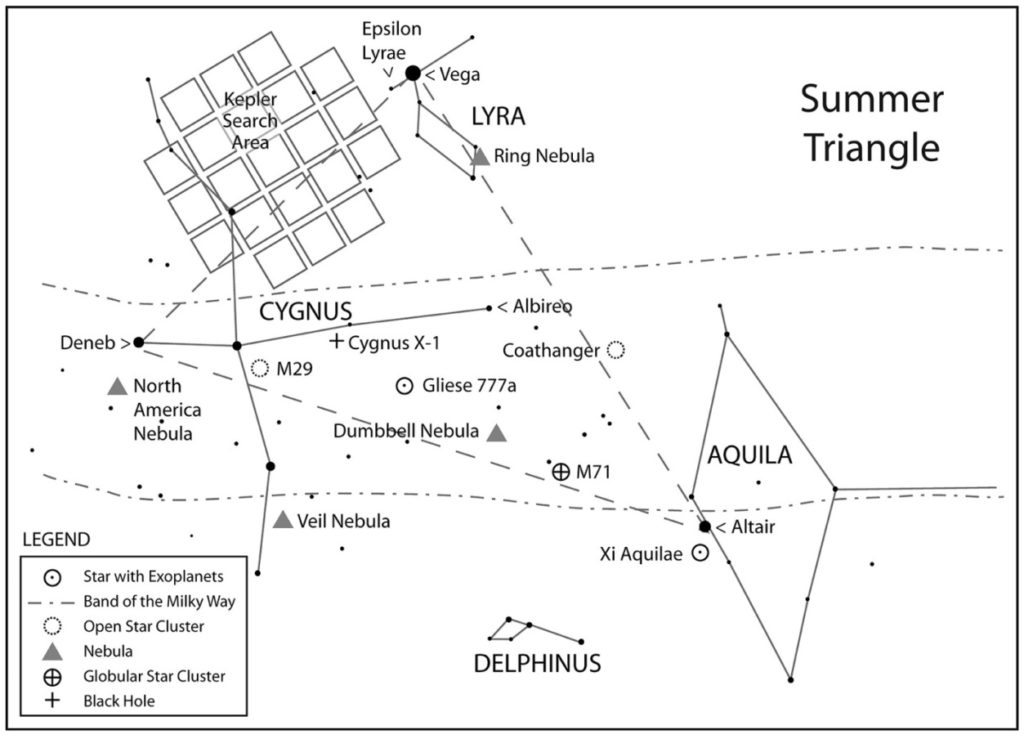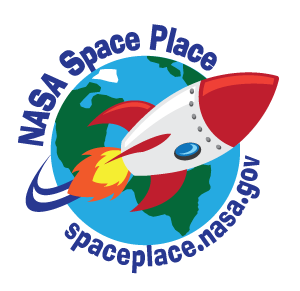By David Prosper

Caption
: This wider view of the area around the Summer Triangle includes another nearby asterism: the Great Square of Pegasus.
September skies are a showcase for the Summer Triangle, its three stars gleaming directly overhead after sunset. The equinox ushers in the official change of seasons on September 23. Jupiter and Saturn maintain their vigil over the southern horizon, but set earlier each evening, while the terrestrial planets remain hidden.
The bright three points of the Summer Triangle are among the first stars you can see after sunset: Deneb, Vega, and Altair. The Summer Triangle is called an asterism, as it’s not an official constellation, but still a striking group of stars. However, the Triangle is the key to spotting multiple constellations! Its three stars are themselves the brightest in their respective constellations: Deneb, in Cygnus the Swan; Vega, in Lyra the Harp; and Altair, in Aquila the Eagle. That alone would be impressive, but the Summer Triangle also contains two small constellations inside its lines, Vulpecula the Fox and Sagitta the Arrow. There is even another small constellation just outside its borders: diminutive Delphinus the Dolphin. The Summer Triangle is huge!
The equinox occurs on September 23, officially ushering in autumn for folks in the Northern Hemisphere and bringing with it longer nights and shorter days, a change many stargazers appreciate. Right before sunrise on the 23rd, look for Deneb – the Summer Triangle’s last visible point – flickering right above the western horizon, almost as if saying goodbye to summer.
The Summer Triangle region is home to many important astronomical discoveries. Cygnus X-1, the first confirmed black hole, was initially detected here by x-ray equipment on board a sounding rocket launched in 1964. NASA’s Kepler Mission, which revolutionized our understanding of exoplanets, discovered thousands of planet candidates within its initial field of view in Cygnus. The Dumbbell Nebula (M27), the first planetary nebula discovered, was spotted by Charles Messier in the diminutive constellation Vulpecula way back in 1764!
Planet watchers can easily find Jupiter and Saturn shining in the south after sunset, with Jupiter to the right and brighter than Saturn. At the beginning of September, Jupiter sets shortly after midnight, with Saturn following a couple of hours later, around 2:00am. By month’s end the gas giant duo are setting noticeably earlier: Jupiter sets right before 10:30pm, with Saturn following just after midnight. Thankfully for planet watchers, earlier fall sunsets help these giant worlds remain in view for a bit longer. The terrestrial planets, Mars, Venus, and Mercury, remain hidden in the Sun’s glare for the entire month.
Discover the latest in space science from the NASA missions studying our universe at nasa.gov

Caption
: Once you spot the Summer Triangle, you can explore the cosmic treasures found in this busy region of the Milky Way. Make sure to “Take a Trip Around the Triangle“ before it sets this fall! Find the full handout at
bit.ly/TriangleTrip


